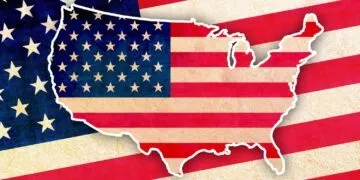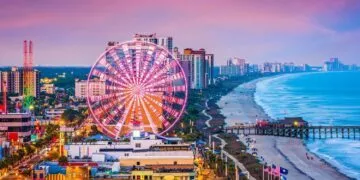Officially nicknamed “The Pelican State” but also known as “The Bayou State” and “The Creole State,” Louisiana was the 18th state to join the United States of America on April 30, 1812.
It has a population of 4,648,794 people (as of 2019), making it the 25th most populous state. Louisiana is bordered by the states of Mississippi, Texas, and Arkansas.
With a total of 52,069 square miles (135,382 square kilometers) of land and water, it is the 31st largest state.
The capital of Louisiana is Baton Rouge, situated in the southeast of the state.
That’s enough fast facts about the Pelican State for now, though; we’re here to learn some real facts!
Louisiana has been inhabited for over 9000 years!
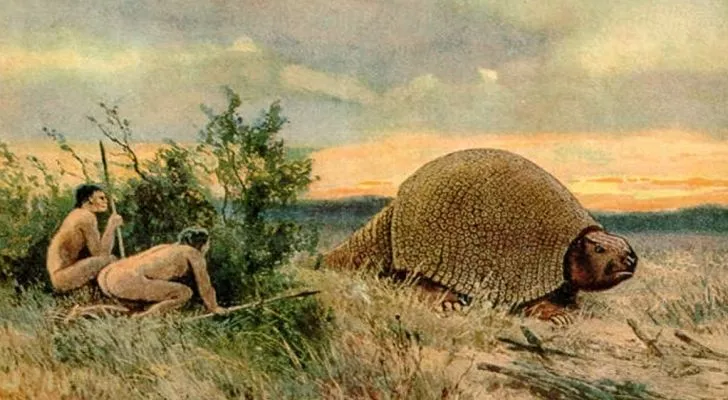
People have lived and thrived in the region now known as Indiana for thousands of years, with the earliest known archaeological evidence dating all the way back to around 8000 BC.
The first humans to have lived in this region would have been Paleo-Indians, who traveled across the Bering Strait from modern-day Russia into Alaska and then down through the Americas.
By around 3400 BC, more complex societies were developing, which created a series of artificial mounds at the site of Watson Brake, Louisiana, which are the oldest of their kind known in North America.
By around 1200 AD, many different cultures rose and fell, with a new form of culture growing – a highly agricultural culture that relied heavily on maize.
These people were of the Caddoan Mississippian culture, and they controlled large swathes of land ranging from northeast Texas, western Arkansas, eastern Oklahoma to northwest Louisiana.
The various tribes who were met when Europeans first arrived in the region are direct cultural descendants of the Caddoans.
The first Europeans to reach Louisiana were the Spanish.
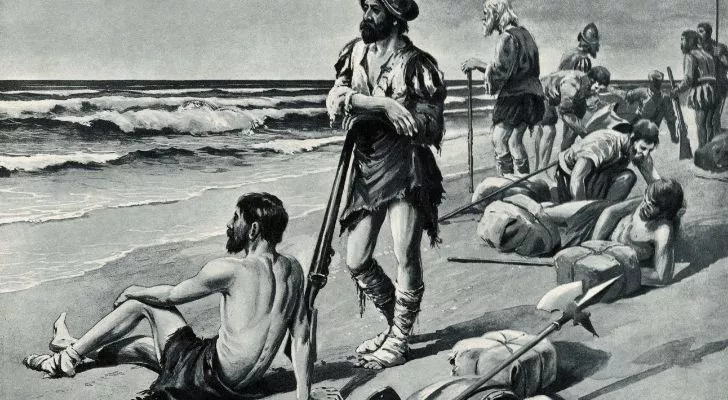
Several early Spanish expeditions reached various points in Louisiana.
The first expedition was led by the conquistador Panfilo de Narváez in 1528 to establish colonies and fortresses throughout Florida.
The mission was a disaster from start to finish, with the expedition accidentally passing by the mouth of the Mississippi River after giving up on the mission.
Instead, they attempted to sail along the Gulf of Mexico to modern-day Texas.
The second expedition was led by the famed explorer and conquistador Hernando de Soto in 1542, who traveled deep inland to the northern reaches of modern-day Louisiana.
While there, the expedition made contact with many different tribes belonging to the Caddo culture before making their way down the Mississippi River to the Gulf of Mexico.
Both expeditions were met with either hostility from the beginning or inevitably made the locals hostile due to various despicable actions.
As a result, Spain made no land claims to the area.
France was the first European nation to lay claim to Louisiana.

France’s interest in the region didn’t really emerge until around the 17th Century, quite some time after de Soto’s expedition.
France had high hopes for its colonial efforts, aiming to establish control from the Gulf of Mexico, following the Mississippi River, all the way up to Canada.
In 1682 the great sprawling region surrounding the Mississippi River to the east, west, and north was claimed by France, and the colony was named La Louisiane by the French explorer Robert Cavelier de La Salle.
A number of settlements were established in the region, with the first being Fort Maurepas, located in modern-day Mississippi.
The first permanent European settlement in Louisiana was founded in 1714.
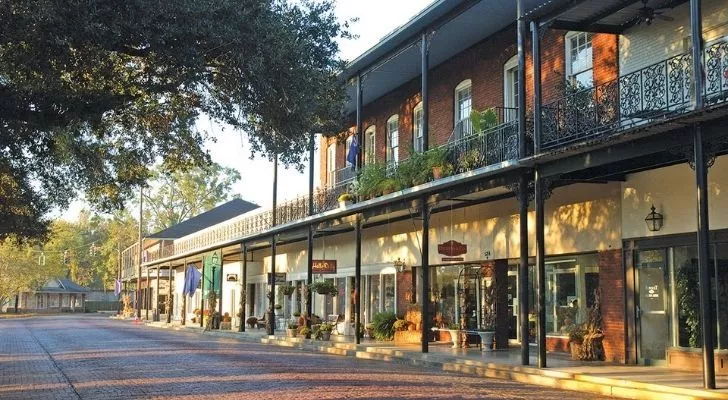
Louis Juchereau de St. Denis founded the town of Natchitoches in 1714, and it’s still standing today.
It was named after one of the local Louisiana tribes, the Natchitoches people.
Although other small trading posts and settlements were established within the region, this was the first permanent settlement.
It was created with two main goals in mind – to simultaneously prevent Spain from settling any further inland while also developing a trading network with Spain.
Louisiana was named after the king of France.

When Robert Cavelier de La Salle made his way to North America and claimed land in the name of France, he must have been feeling especially patriotic.
The king of France who reigned from 1643 to 1714 was Louis XIV, and it was after him that Cavelier named the land.
He didn’t just go and name it Louis’ Land, though; he named it La Louisiane, which basically translates into “the place related to Louis.”
Over time and many changes in ownership, the region became known as Louisiana instead.
Louisiana changed hands many times before becoming a US territory.
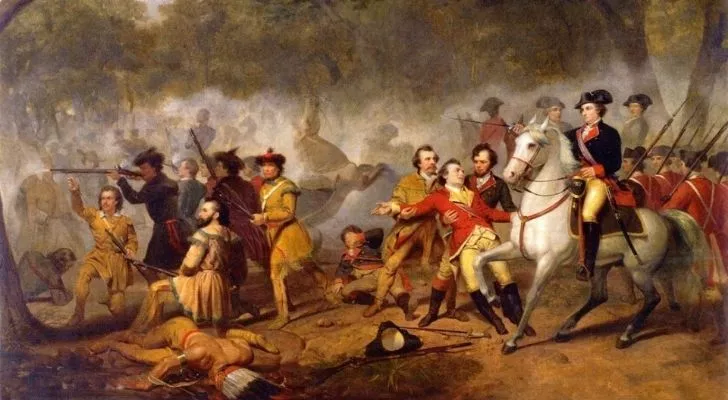
France had almost completely untested control over the region of Louisiana for over a hundred years.
The worst conflicts they had were with their fellow countrymen in the colony of Canada, who disputed their shared border to the south of the Great Lakes region.
After France’s defeat to the British at the end of the Seven Years War (also known as the French and Indian War) in 1763, La Louisiane was divided in two.
Most of the land to the east of the Mississippi River was handed over to the British, while the rest became a Spanish Colony due to an earlier treaty in 1762.
Spain’s control of the region was rather short-lived, though, with Napoleon Bonaparte reclaiming the land for France in 1802.
That too was short-lived, though, with the United States purchasing the entirety of Louisiana from France in 1803 for a sum of $15 million – that’s around $233 million today!
By 1860 nearly 47% of the population of Louisiana were slaves.
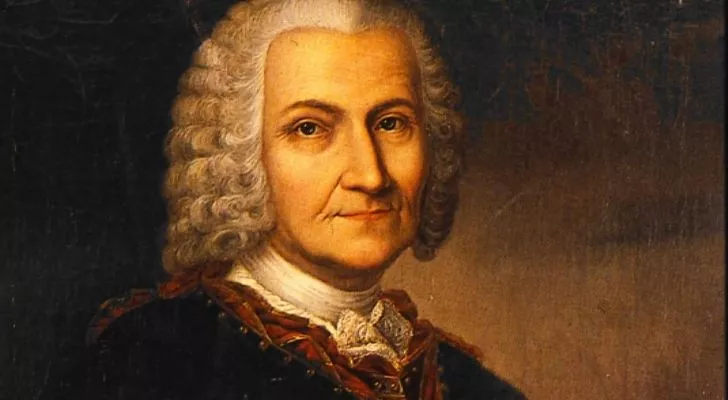
Louisiana, along with the other Deep South states, relied on the usage of slavery to such levels unseen elsewhere in the US.
The French started the tradition in 1708 when Jean-Baptiste Le Moyne brought the first two African slaves to Louisiana.
Demand for slaves grew rapidly, which numbered approximately half the population of Louisiana by 1721.
This tradition continued with the US’ purchase of Louisiana, with new settlers establishing sprawling plantations that relied exclusively on the use of slaves.
Louisiana suffered a quick defeat during the American Civil War.
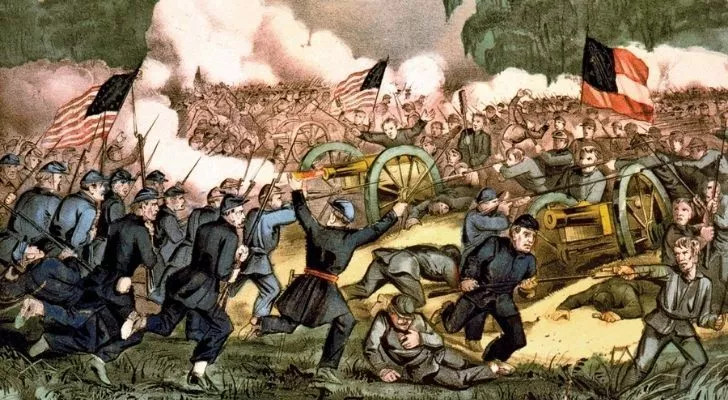
The elite ruling white classes of Louisiana relied heavily on the use of slaves.
They were one of the first states to join the Confederate States of America after Abraham Lincoln was elected president of the United States of America in 1861.
A Union lead strategy designed to attack the Confederates from two sides resulted in New Orleans’ capture by Union forces the following year, in 1862.
Louisiana was made a state within the Union, although violence rose significantly in the region following the emancipation of slaves.
It wasn’t until 1866, with the Reconstruction act establishing federal military control of the more volatile states, that the violence began to decrease.
With newly freed slaves finally, this allowed some sense of equality under the laws of the US government.
Most of Louisiana used to be underwater.
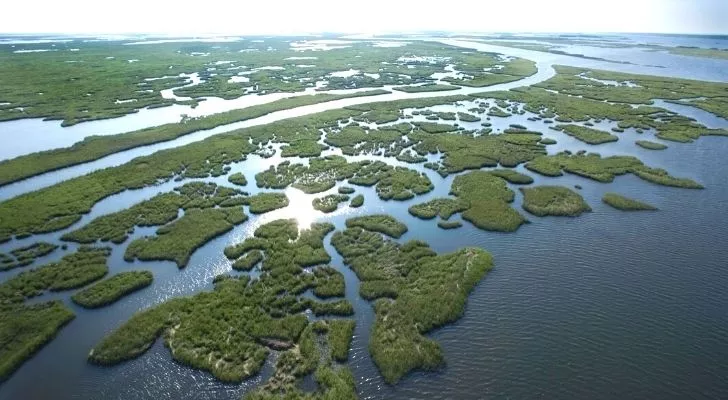
While some parts of Louisiana’s land have been around for millions of years, that’s not the case for other regions.
Much of Louisiana’s land was originally sand and earth that was swept down the Mississippi River over the course of thousands of years, which eventually built up to such extremes at the mouth of the Mississippi.
This sand and earth accumulated over time, extending the landmass of Louisiana over time.
Louisiana has more than 60 thunderstorms per year on average.
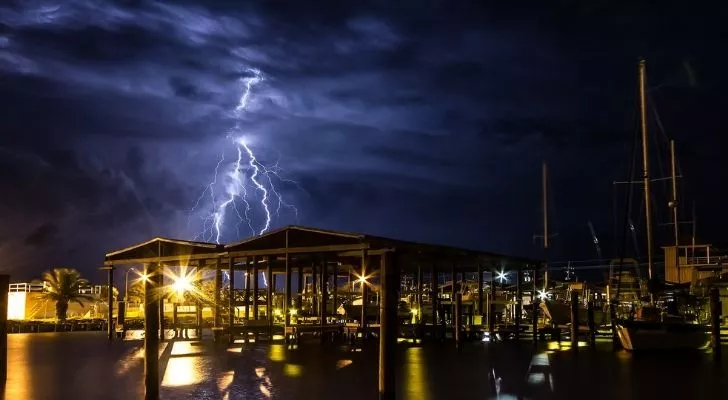
Louisiana seems to have the lion’s share when it comes to extreme weather, with the majority of its thunderstorms passing through the state over the summer.
The only other state that has more thunderstorms per year occurs in Florida.
Louisiana is also very prone to tornadoes, which are frequent in the earlier months of the year.
A hurricane makes landfall in Louisiana every three years!
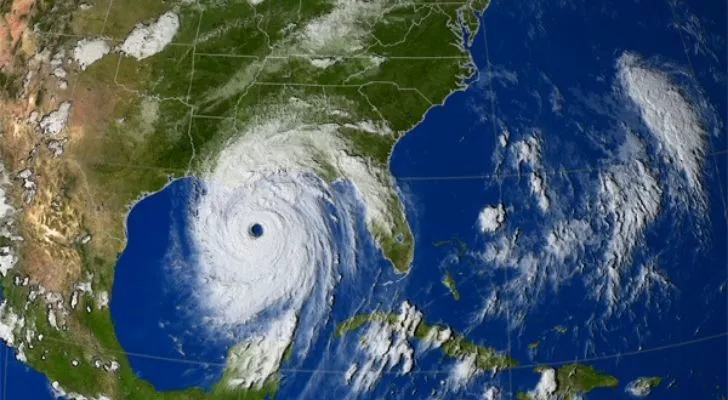
Well, to be more precise, it’s actually every 2.8 years on average.
The amount of tropical storms and cyclones to hit Louisiana is about twice the amount of hurricanes, with two storms on average reaching Louisiana’s shores every three years.
One of the worst hurricanes to ravage Louisiana within recorded history was Hurricane Katrina, a category three hurricane when it hit land on August 29, 2005.
More than 80% of New Orleans was flooded, with more than two million residents losing their homes.
Many residents relocated to temporary housing in other parts of the country have still not returned, finding nothing to go back to.
The infamous Turducken was invented in the kitchens of Louisiana.

For those not in the know, a Turducken is a bit of an odd one.
You take a deboned chicken and stick it inside a deboned duck, which you then stick inside a deboned turkey.
The man who takes responsibility for this questionably sane meat monster is Paul Prudhomme.
While many people claim that he definitely wasn’t the first to invent such a thing, he was certainly responsible for popularizing the dish.
The namesake of Louisiana’s official nickname nearly died out.
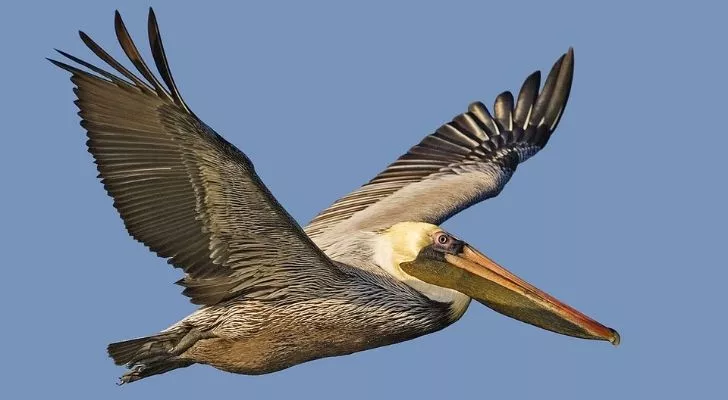
Louisiana had long been known unofficially as the pelican state due to the abundance of brown pelicans that flocked to the region.
The marshy wetlands and long shoreline were the perfect habitats for them, and pelicans became synonymous with the idea of Louisiana.
By 1966 the state took on the official nickname of the Pelican State, shortly before the bird was listed as endangered in 1970.
It turns out that a commonly used pesticide called DDT was interfering with the birds’ abilities to reproduce, and the local population was in danger of disappearing forever.
Fortunately for both the state and the pelicans, the numbers are now up to around 40,000 thanks to lengthy recovery efforts!
Louisiana has the highest number of alligators in the US.
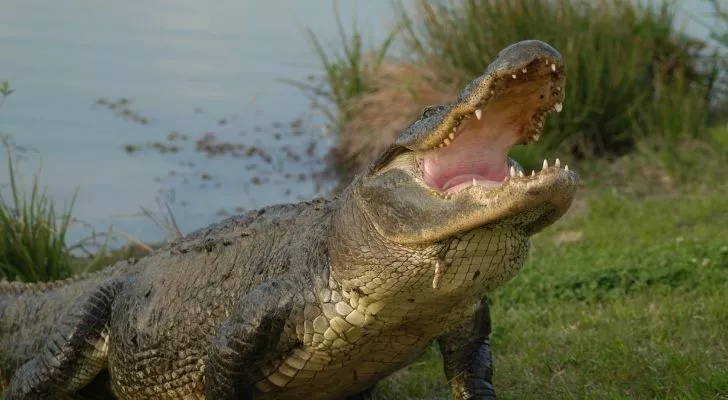
There are more alligators in Louisiana than almost everywhere else in the United States, although Florida is a close second.
It’s estimated that there are at least two million of them in the wild, and that’s quite a terrifying thought if you ask me!
There are also around 300,000 of them in alligator farms across the state.
However, the craziest fact of all is that the alligator industry in Louisiana is worth $57 million a year! The majority of this comes from the sale of alligator hide and meat.
Famed actor Nicolas Cage has a pyramid-shaped tomb in New Orleans.
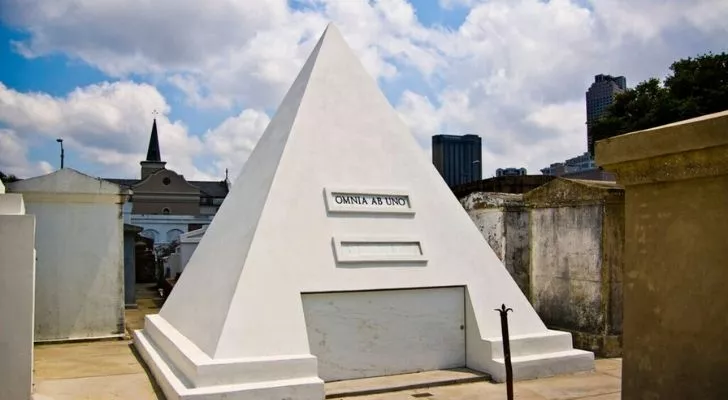
Large swathes of land in Louisiana are so low in elevation that parts are actually below sea level.
Due to this, many of the state’s dead aren’t buried in the ground, especially in New Orleans.
Instead, they’re often placed in above-ground mausoleums or tombs.
Although he’s never explained why Nicolas Cage bought a plot of land in one of New Orleans’s most famous cemeteries and constructed a pyramid-shaped tomb.
Some claim it’s a connection to the Illuminati; some claim that he is immortal, and it’s where he will regenerate himself.
Whatever the reason, it’s pretty much what we expect of Nicolas Cage these days!
If you make your way down to Louisiana, you certainly won’t regret it.
There’s just something in the air, and we’re not talking about the humidity!
The vast, endless swamps and jungle-like landscape make you feel like you’ve been transported into a whole new world.
The state has come a long way from its early days as a French colony, and it’s just going to get better and better as time goes on!


